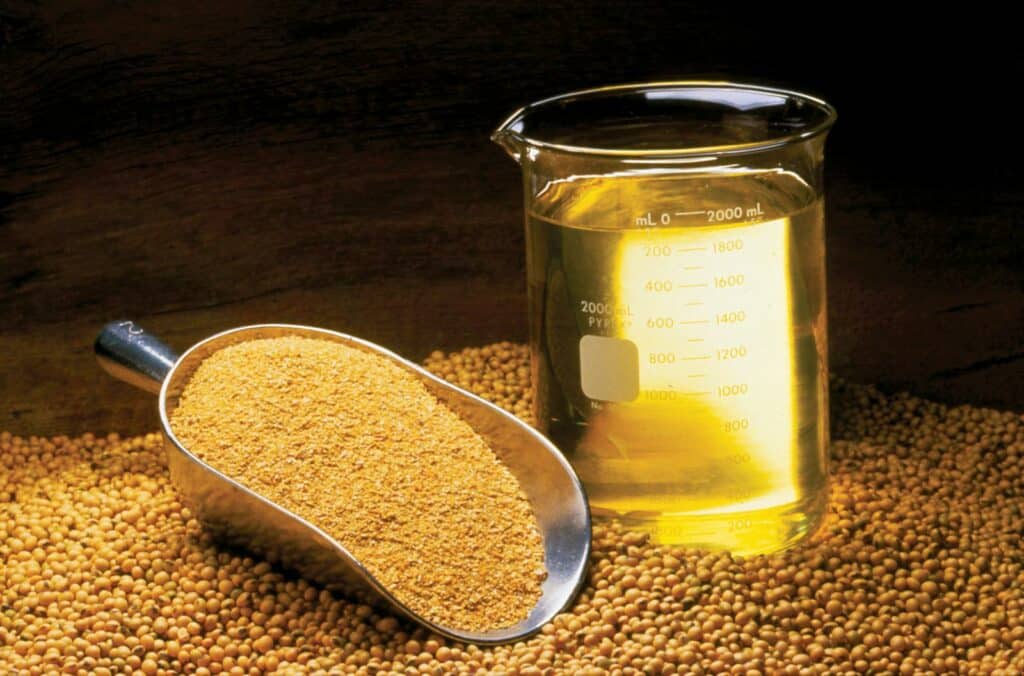Source: Prof Johann Willemse, SAPPO News November 2020, photo credit: Feedipedia
Maize and soybean prices, the main feed ingredients for pig farmers, reached new South African record prices during mid-November 2020 despite decent domestic crops and a stable rand exchange rate during the past few weeks. The question is: What triggered the record high prices and what is the outlook for lower prices during the next few months? We need to take a step back to try and answer the question.
At the beginning of our harvesting season the outlook was for a decent soybean crop close to 1,25 million tons and that we will need supplementary bean imports as well as large meal imports. The rand has already deteriorated then, but the USA crop outlook was normal with a slightly higher dollar price outlook during the rest of 2020.
Our maize crop estimate was close to 15,5 million ton with export quantities (2,2 million ton). The price outlook was for export-based prices for the rest of 2020.
What happened?
Local Market: One of the drivers is that it seems that deliveries are short on the lower crop estimate. There is a strong growth in demand in the domestic market for good quality white maize for human consumption (demand grew by 10% this year). A further complication was that about 1,2 million ton white maize was not suitable for the human market.
The supply and demand expectations were based on the believe that a large quantity of white maize would have gone to the feed market, but white maize prices needed to be at a discount to yellow maize to facilitate this substitution. This did not happen.
Lastly, with our local maize price at export parity around R2 400/ton at harvest, relatively large shipments were contracted for exported purposes. Local demand for maize is strong and end of season carry out (April 2021) will be extremely short unless we get a lot of early harvesting.
La Nina cycle: There is international consensus that we are moving into a strong La Nina phase. While a La Nina phase is good for our summer rainfall crops the opposite is true for the USA and South America.
The outlook for next year’s USA crop is murky, while the current crop was downsized in October and early November. Drought in Argentina has delayed crop plantings significantly, while dryness is at play in the Brazilian soy crop. This made markets jittery.
The USDA world supply and demand estimates: Firstly, the USDA’s early October supply and demand estimates shocked the international market by lowering maize and soy carry out stock in the USA (and smaller crops, which are now being harvested).
Early November 2020 the market was further shocked by a further reduction in USA carry out stock for late 2021. Stock ratios are estimated to be at a seven-year low and soy-ending stocks is in a danger zone. Brazil is running short on current soybean stocks and will need to import due to a very strong Chinese import demand. This made the market more nervous.
Chinese bull market: The Trump/Chinese agri-trade deal results in China increasing imports of agricultural products from the USA. China is expected to import products to the value of US 31 billion this year. China also started rebuilding its pig herds and is transforming them into large commercial units, requiring feed grain imports to supplement their own crops. The current expectation is that China could import up to 100 million ton of feed grain/soy in the next twelve months.
To conclude: I suspect we will have to deal with the current situation until the new hemisphere crop comes into the silos next year. The chance of the rand strengthening significantly is very slim.
Our maize prices will basically reflect export prices well into the 2021 winter. The market has already discounted the possibility of continuous maize export prices well into 2021 and a possible 16 million ton possible crop. Given a large local soybean crop next year of say 1,5 million ton, we will still need to import significant amounts of soymeal at import prices.
The graph illustrates the sharp increase in prices during USA harvesting time. Prepare your business for high feed prices during the next few months.
The South African Pork Producers’ Organisation (SAPPO) coordinates industry interventions and collaboratively manages risks in the value chain to enable the sustainability and profitability of pork producers in South Africa.









